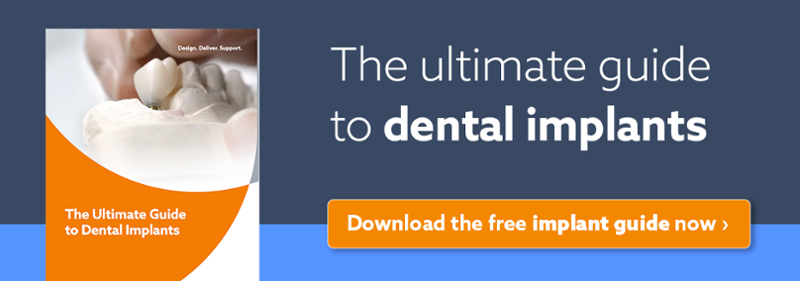Technology is helping dental and oral health clinicians provide faster, more accurate, and well-rounded treatment to their patients. The dental world is undergoing major changes thanks to advancements in new technology. When dental implants were invented by a Swedish medical researcher in 1952, the procedure was considered a modern-day miracle. Now, seven decades later we’re experiencing another massive breakthrough in the form of digitally guided implants. With the right tools, dentists can virtually diagnose and treat cases before ever touching the patient. This lessens the margin for unexpected errors and outcomes during surgery. Dentist can design and print surgical guides from their office or outsource it to a dental laboratory, like DDS Lab.
CAD/CAM restorations are becoming the norm, making patient care simpler and faster than ever before. With the help of surgical guides, digital impressions, and 3D models, treatment plans can be catered specifically to the patient and executed efficiently and accurately.
Overview of Dental Implant Treatment
Dental implants provide a predictable way to restore both single and multiple teeth. They are particularly effective for edentulous patients. Treatment can closely replicate a patient’s natural teeth, both aesthetically and functionally. With dental implants, patients regain normal masticatory function and the ability to speak properly and smile with confidence.
Download The Ultimate Guide to Dental Implants »
Latest News on Dental Implants
As technology changes daily, it is important to stay educated on the latest news regarding dental implants. Read below to find out the newest technological advances in dental implants and why they are quickly becoming the preferred solution for replacing missing teeth.
- Virtual 3D-printed surgical model improves bone regeneration
Often, when a patient loses teeth due to trauma or disease, bone loss makes it difficult or impossible to use dentures or receive dental implants. To combat this problem, bone grafting, a surgical procedure that replaces bone, is often used to serve as a support for replacement teeth. Titanium or synthetic mesh are usually used as a tent over the bone graft to support the graft’s shape and volume while the new bone grows. However, titanium mesh can be logistically challenging and time-consuming to form and position in the patient, and it can irritate the soft tissues in the mouth. Some dental surgeons recently discovered a new technique to create and position titanium mesh to improve guided bone regeneration.
By digitally creating the titanium mesh, the dentists were able to ensure that the material was the precise shape and volume needed for the patient’s bone defect, reducing the margin for error. During surgery, the dentists properly placed the titanium mesh and bone graft with a positioning rig fabricated from a plastic mold that used the existing teeth to hold the mesh in place while it was being secured. Finally, to improve wound healing and bone stability, they applied fibrin membranes in the patient’s platelets.
- Is osteoporosis a risk factor for implant survival or failure?
A clinical study was conducted in adults with osteoporosis to determine if this particular disease is a risk factor for dental implant survival. Four reviewers from the Australian National Health and Medical Research Council (NHMRC) were involved in the research and screening for this clinical study.
The relative risk of implant failure and mean marginal bone loss were analyzed within a 95% confidence interval. The main outcome of the clinical study indicated that there was no difference in implant survival ratej between patients with and without osteoporosis. The implant survival rate in bone tissue with osteoporosis was similar to that of the control group. In conclusion, implants placed in patients with systemic osteoporosis did not present higher failure rates than those placed in patients without osteoporosis.
Please be reminded that should you wish to discuss dental implant procedures in more detail, our experienced technical team is here to assist you.
Click here to schedule a consultation with our technical team »

References:
http://www.joionline.org/
https://www.nature.com/articles/6401307
https://blog.ddslab.com/dental-implant-procedures